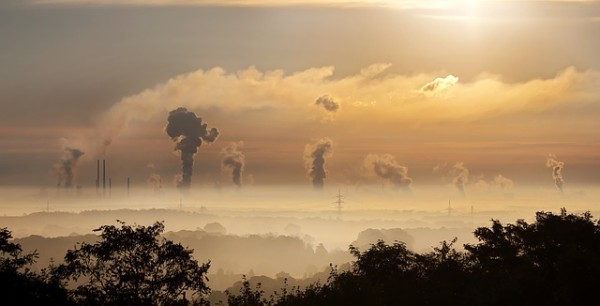New research reveals that the dirt and grime covering buildings and other urban infrastructures apparently transform into smog when sunlight breaks down the grit covering buildings and the rest of the urban landscape.
This filth covering buildings, sidewalks, statues and other urban structures are chemicals emitted by air pollution from cars, buses and factories. Now, new research shows that sunlight is breaking down these chemical compounds that build up this grime and releases smog forming particles.
According to leader of the study, chemistry professor James Donaldson from the University of Toronto, many are still not aware that urban air pollution also includes recycling of nitrogen oxides where these compounds stick and accumulate onto building surfaces making buildings dirty. This new study has proven that this is already occurring but scientists are still not sure to what extent this is happening since this is already a significant and unaccounted effect that can worsen air pollution in cities.
This pollution emitted by car and vehicle exhaust, commercial manufacturing and electrical utilities include nitrogen oxides, nitrogen dioxide or nitrous oxide and they all account for 5 percent of the greenhouse gas emissions in the United States in 2013 according to the Environmental Protection Agency.
When these nitrogen oxides react with other compounds in the atmosphere, they transform into volatile organic compounds which are produced in the ozone and ground level producing the major ingredient of smog.
Smog is dangerous to health as research by the American Lung Association reveals that almost half of Americans live in cities where air pollution levels are extremely high and this can lead to premature death, asthma attacks, risk for cardiovascular diseases and it can even shrink the brain.
Donaldson also says that during his prior studies, nitrogen oxides disappeared faster compared to rain wash-offs as more nitrogen oxides were released when it is exposed to artificial sunlight than exposed to darkness.
Donaldson and his team set up "grime collectors" or special glass beads in Toronto, Canada and Leipzig, Germany. After being exposed for six weeks in Leipzig, the team reveals that it contained 10 percent more nitrates in shady areas than those that are exposed under the sun, the grime collectors in Toronto are still ongoing.
Donaldson believes that the current understanding of urban air pollution is not updated with this information about dirt and grime on urban landscapes as a huge contributor for air pollution and if this is proven correct, then scientists should now consider the recycling of nitrogen oxides into the atmosphere from this grime.
These findings will be presented at the National Meeting and Exposition of the American Chemical Society.


